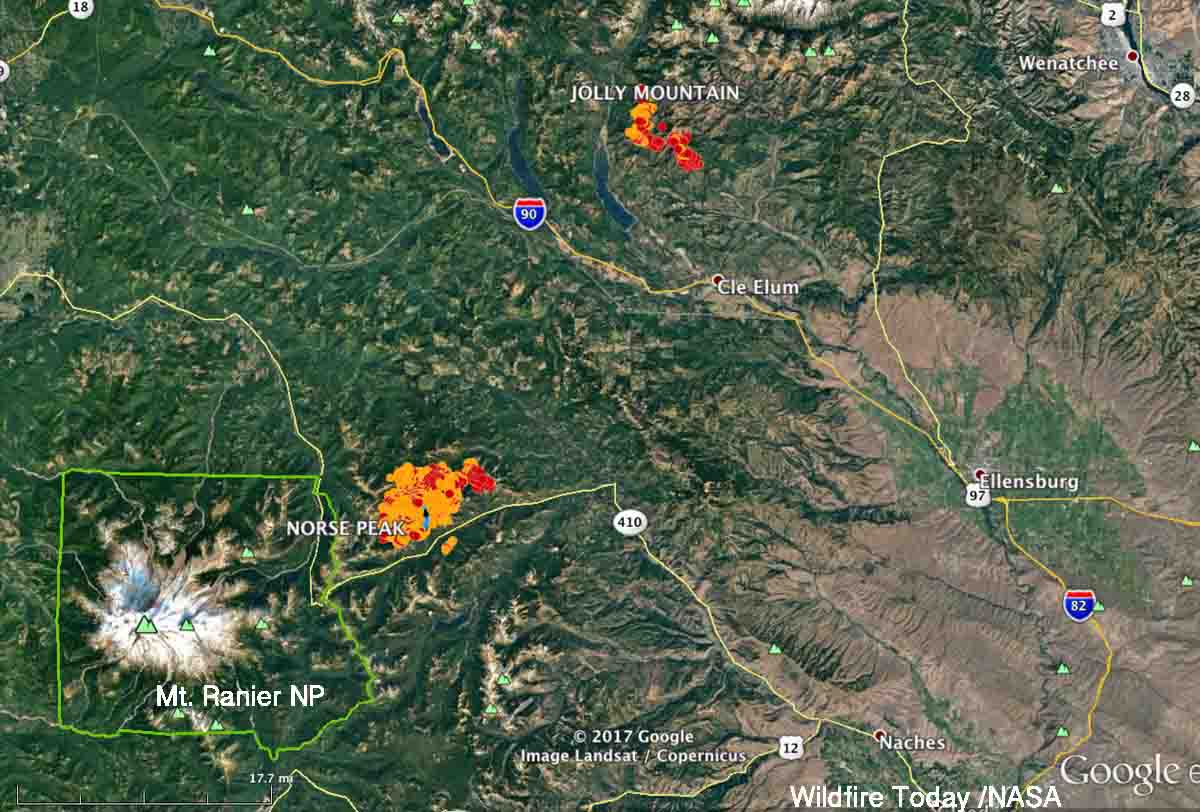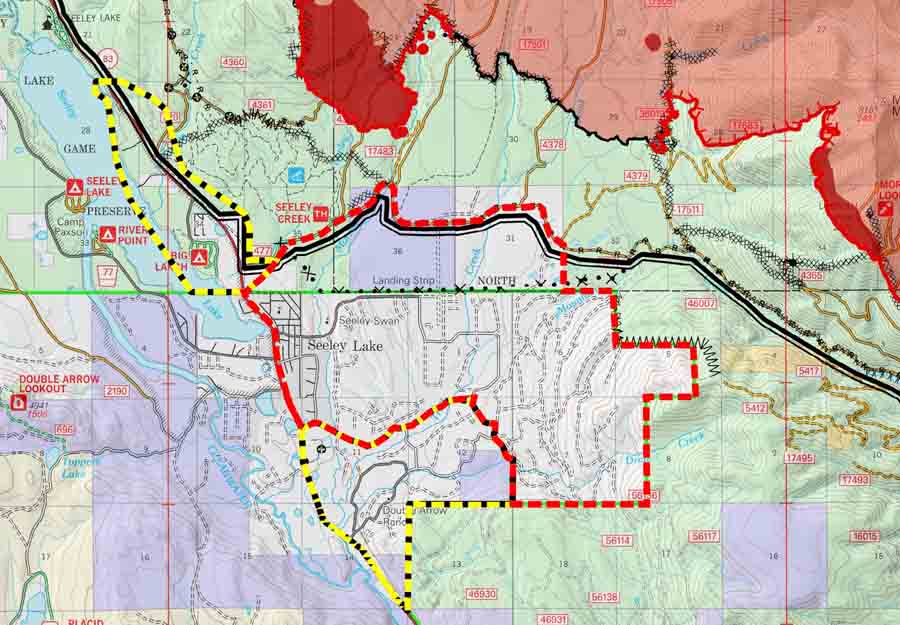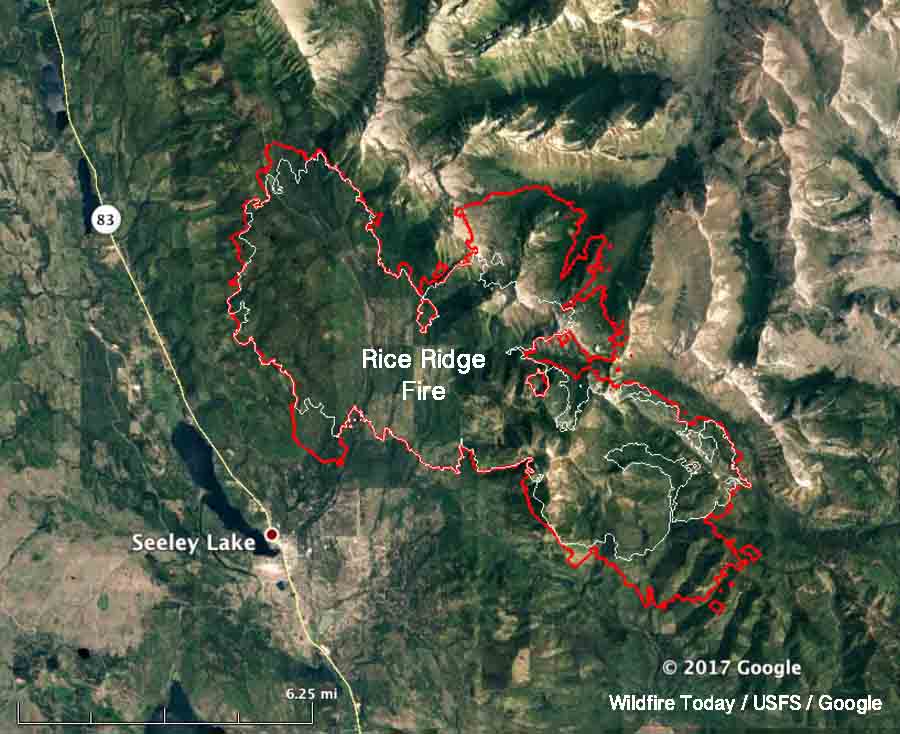Above: Satellite photo showing smoke from fires in the Northwest United States August 29, 2017. The red dots represent heat detected at 3:56 a.m. PDT August 30, 2017.
(Originally published at 8:30 a.m. PDT August 30, 2017)
The Diamond Creek and Norse Peak Fires in Washington were very active Tuesday.
The Diamond Creek Fire in northern Washington that has been burning for five weeks spread across the border into Canada Tuesday. A spokesperson for the fire, Connie Mehmal, said it added another 16,000 acres to bring the size up to almost 49,000 acres, but heavy smoke on the north side in Canada prevented accurate mapping. The fire is not being completely suppressed, but special emphasis is directed toward protecting structures, including the community of Mazama on the south side.
Assigned to the fire are 3 helicopters and 3 fire engines for a total of 53 personnel, Ms. Mehmal said.

The Norse Peak Fire on the north side of Highway 410 northeast of Mount Rainier National Park grew by more than 9,000 acres Tuesday and has now burned 12,904 acres. Most of the spread was on the north side, pushed by a strong wind out of the south. The fire behavior on Monday and Tuesday was described as “plume dominated” and “extreme running, group torching, and short-range spotting”.

The strategy on the Norse Peak fire is not to completely suppress it, but to herd it around as necessary to protect private property and structures.





